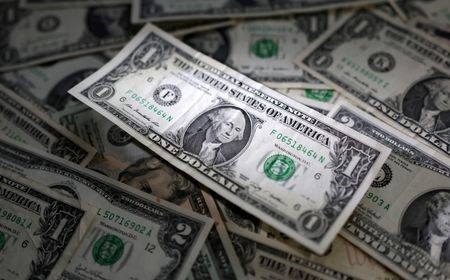




Philippines Trade Update: Exports momentum continues
 DOWNLOAD
DOWNLOAD

Quarterly Economic Growth Release: More BSP cuts to come
 DOWNLOAD
DOWNLOAD

Monthly Economic Update: Fed catches up
 DOWNLOAD
DOWNLOAD


US yields climb as inflation data dashes hopes for large rate cut

NEW YORK – US Treasury yields rose on Wednesday after the release of August data showing US consumer prices rose marginally while underlying inflation remained sticky, curbing expectations for a large interest rate cut by the Federal Reserve next week.
Excluding the volatile food and energy components, the Consumer Price Index climbed 0.3% in August after rising 0.2% in July. In the 12 months through August, the so-called core CPI increased 3.2%. That followed a 3.2% gain in July.
Treasury yields, which move inversely to prices, surged after the release, as traders pared back bets on a 50 basis point cut by the US central bank at its Sept. 17-18 rate-setting meeting.
“Core (CPI) at 0.3% is what’s shaken up the market,” said Tony Farren, managing director of rates sales and trading at Mischler Financial Group.
“This dampens the chances of a 50 basis point cut in September; I think that’s definitely off the table now, and it hurts the chances for any 50 bps cut for the rest of the year, although we still have a lot of data after,” he said.
Yields subsequently declined, likely because of some dip-buying activity, even if they ultimately inched higher. “There are people who are still not long and always try to take opportunities when you have the market selling off,” said John Madziyire, head of US Treasuries and TIPS at Vanguard.
Late on Wednesday, traders largely bet on 25 basis point cut next week, while a bigger half-point cut had a 13% probability, down from about 34% on Tuesday, CME Group data showed.
The uptick in yields followed price gains overnight that had led 10-year yields to their lowest since June 2023 and two-year yields to their lowest since September 2022.
Some analysts said that was partly a reaction to the US presidential debate on Tuesday evening. Vice President Kamala Harris, the Democratic candidate, was widely seen as dominating the debate with Republican former President Donald Trump, prompting betting markets to give her better odds in the November presidential election.
“Yields drifted slightly lower during the overnight session with a theme of stability emerging in the wake of the Harris/Trump debate,” BMO Capital Markets rates strategists wrote in a note. “From the perspective of the US rates market, nothing emerged from the debate that triggered reflationary jitters or concerns about Treasury supply indigestion.”
Harris’ late entry in the presidential race after President Joe Biden’s withdrawal in July prompted a reversal of bond trades that were put in place on expectations of a second Trump presidency. Those expectations had led to higher US Treasury yields on anticipation of higher inflation and wider budget deficits under Trump.
On the supply side, the US Treasury Department sold USD 39 billion in 10-year notes, which received solid demand.
The notes were sold at a high yield of 3.648%, about 1.5 basis points below the expected rate at the time of the bid deadline – a sign that investors were willing to pay up to secure the paper. The sale will be followed by a USD 22 billion 30-year bond auction on Thursday.
Benchmark 10-year yields were last at 3.655%, up 1 basis point from Tuesday. Two-year yields, more reflective of expected changes in monetary policy, were at 3.645%, up about 3 basis points from Tuesday.
The 2/10 yield curve, which plots 10-year yields over two-year yields and is closely watched by investors as it signals an upcoming recession when inverted, remained in positive territory on Wednesday, although by less than 1 basis point. During the day, 10-year yields slipped below two-year yields for the first time since Sept. 6.
(Reporting by Davide Barbuscia; Editing by Andrew Heavens and Jonathan Oatis)
This article originally appeared on reuters.com





 By Reuters
By Reuters